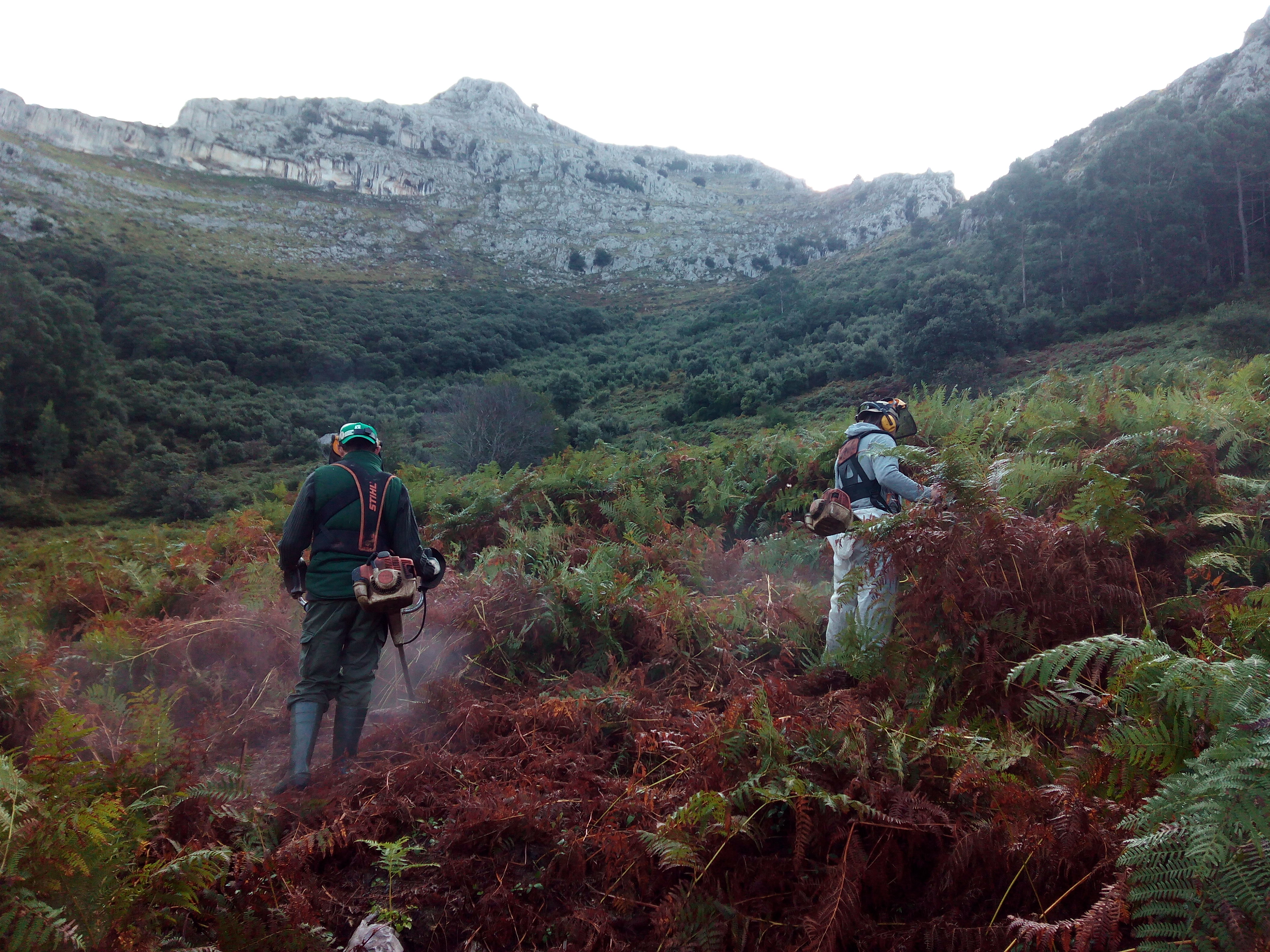Fern species of the genus Pteriidium are considered among the most successful invasive plants. In our case, the common fern (Pteridium aquilinum) is one of the most abundant plant species in the Cantabrian Mountains, and is also widely distributed. It is an indigenous species, with great adaptability to temperature, rainfall and locations, and which, under various circumstances, especially due to cultural factors or the lack of means for its elimination as in the past, makes it invasive, occupying the largest part of abandoned farmland, forests, etc. They are plants with a fast and strong growth, generating large shaded areas in the undergrowth.
As a highly flammable fuel, its large bushes are a real risk factor for the spread of forest fires in the event of drought.
On the other hand, the common fern has a great resilience against fire, which stimulates the germination of its spores and does not normally affect its rootstock, sprouting very easily after fires.
In addition to its great chemical and allelopathic arsenal, these distinctive characteristics favor its invasive and colonizing propagation before other also indigenous species and possibly less harmful to these effects, reducing the biodiversity in the area.
Therefore, based on these considerations, the main challenge of the project was to determine the economic viability of controlling common fern populations (Pteridium aquilinum) in certain locations of the Cantabrian Mountains, in a circular economy system adapted to climate change, as a valid replicable method of forest management. This would allow:
- reducing the risks of forest fires caused or favored by the presence of large masses of ferns
- controlling its expansion in an environmentally friendly way, through continuous selective mowing
- reducing the costs of these mowing and control tasks, by obtaining and recovering industrial products obtained from the removed material.



